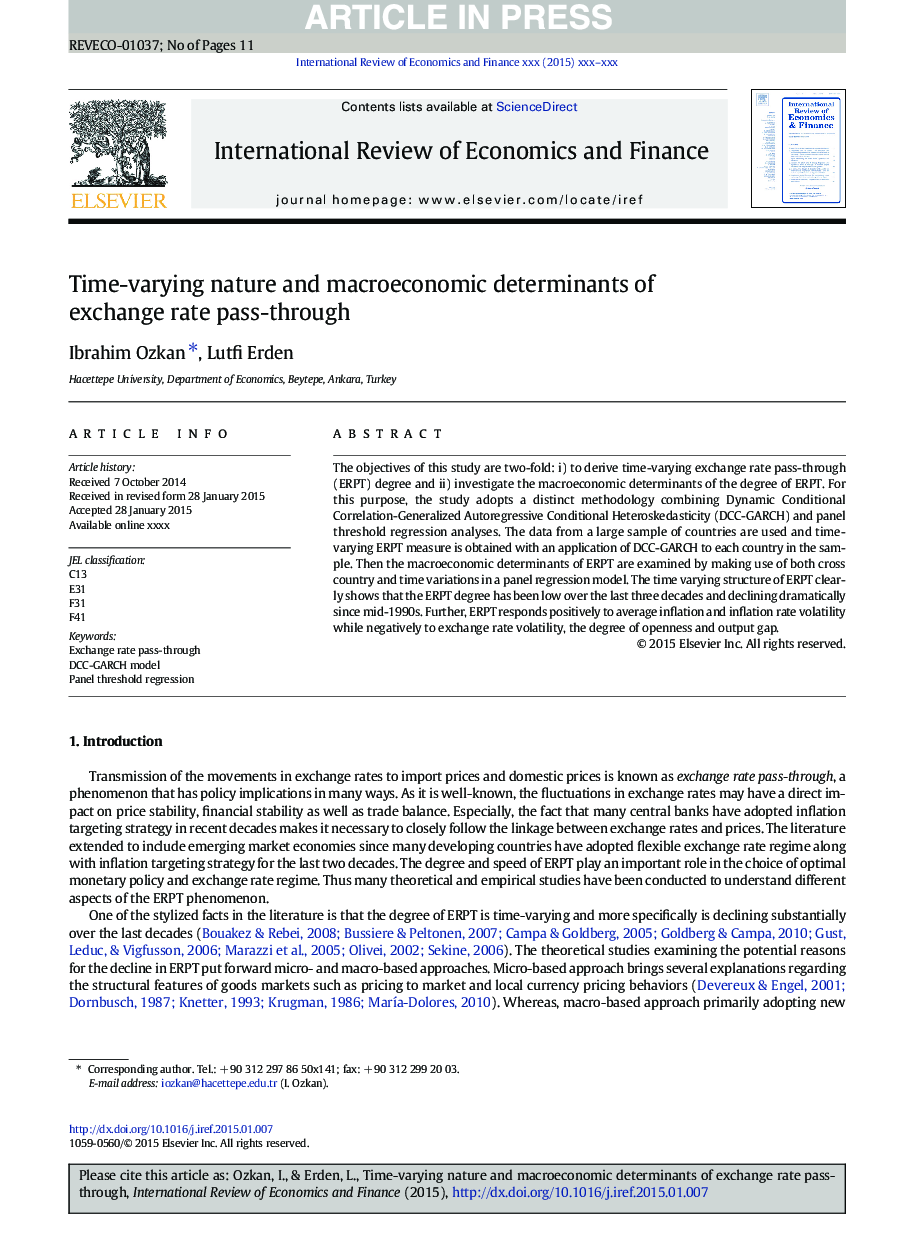| Article ID | Journal | Published Year | Pages | File Type |
|---|---|---|---|---|
| 5083447 | International Review of Economics & Finance | 2015 | 11 Pages |
Abstract
The objectives of this study are two-fold: i) to derive time-varying exchange rate pass-through (ERPT) degree and ii) investigate the macroeconomic determinants of the degree of ERPT. For this purpose, the study adopts a distinct methodology combining Dynamic Conditional Correlation-Generalized Autoregressive Conditional Heteroskedasticity (DCC-GARCH) and panel threshold regression analyses. The data from a large sample of countries are used and time-varying ERPT measure is obtained with an application of DCC-GARCH to each country in the sample. Then the macroeconomic determinants of ERPT are examined by making use of both cross country and time variations in a panel regression model. The time varying structure of ERPT clearly shows that the ERPT degree has been low over the last three decades and declining dramatically since mid-1990s. Further, ERPT responds positively to average inflation and inflation rate volatility while negatively to exchange rate volatility, the degree of openness and output gap.
Related Topics
Social Sciences and Humanities
Economics, Econometrics and Finance
Economics and Econometrics
Authors
Ibrahim Ozkan, Lutfi Erden,
